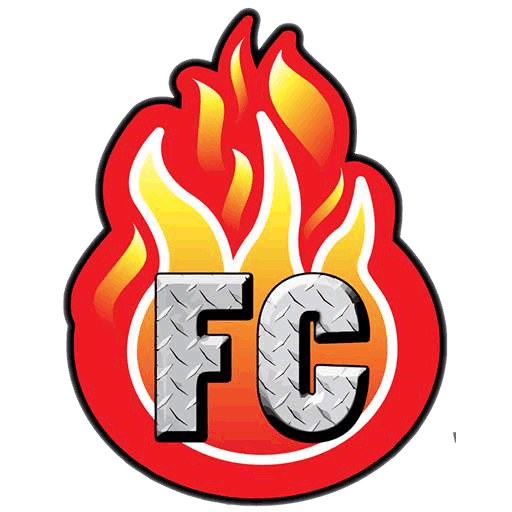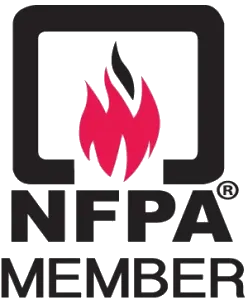Key Points
- Metal oxide sensors detect explosive gases at lower levels (ppm) than catalytic bead sensors because they react to tiny amounts of gas on their surface.
- Firefighters may smell gas but get a zero reading on a catalytic bead meter if gas levels are too low for the sensor but high enough to smell.
- Catalytic bead sensors can fail due to low oxygen, chemical poisoning, or poor calibration.
What Are 4-Gas Meters?
Firefighters use 4-gas meters to detect dangerous gases like oxygen, carbon monoxide, hydrogen sulfide, and explosive gases. These meters use different sensors to find explosive gases, catalytic bead, or metal oxide sensors.
Comparing the Sensors
Catalytic Bead Sensors
- How they work: A heated bead burns the gas, causing a temperature change that’s measured.
- Best for: Higher gas levels, measured in %LEL (Lower Explosive Limit, the minimum amount for an explosion).
- Common use: Standard in 4-gas meters for firefighting.
- Downside: Less sensitive to low gas levels (ppm). Must enter a building to get readings.
Metal Oxide Sensors
- How they work: Gas touches the sensor’s surface, changing its electrical flow, which is measured.
- Best for: Detecting tiny gas amounts (ppm), great for early leak detection.
- Common use: What gas utilities use. Usually in specialized leak detectors, not standard 4-gas meters.
- Advantage: Much more sensitive to low gas levels. Allows fire fighter to get readings from outside the structure to determine if they need to enter.
Why Metal Oxide Sensors Detect Lower Gas Levels
Metal oxide sensors pick up gases at lower levels because:
- Surface reactions: Even a little gas changes the sensor’s electrical flow.
- Tiny particles: Their small size (less than 10 nm) gives more space for gas to interact.
- Special additives: Materials like palladium make them even more sensitive.
Catalytic bead sensors need more gas to start burning, so they miss low-level gases that metal oxide sensors can catch.
Why Firefighters Smell Gas but the Meter Reads Zero
Sometimes firefighters smell gas (like natural gas with added odor) but their catalytic bead meter shows zero. This happens because:
- Gas is too low for the meter: The gas level is below the sensor’s limit (e.g., below %LEL) but high enough to smell (1-2 ppm).
- Low oxygen: Catalytic sensors need oxygen to work and fail in low-oxygen areas.
- Poisoned sensor: Chemicals like silicones or sulfides can block the sensor, stopping it from working.
- Bad calibration: If the meter isn’t calibrated right, it may not detect gas.
Limits of Catalytic Bead Sensors
Catalytic bead sensors have issues that can stop them from detecting explosive gases:
- Need oxygen: They don’t work in low-oxygen places (less than 10% oxygen).
- Poisoning: Chemicals like sulfides or silicones (from sprays or lubricants) can damage the sensor.
- False readings: Other gases can confuse the sensor, giving wrong results.
- Environment and age: Heat, humidity, or old sensors can mess up readings. Regular calibration (every 12 months) and replacement (every 2-5 years) are needed.
Summary
- Metal oxide sensors are better for detecting tiny amounts of explosive gases, but they’re not common in firefighting 4-gas meters. The choice of gas utilities.
- Catalytic bead sensors are standard but miss low-level gases, which is why firefighters might smell gas while the meter reads zero.
- To stay safe, firefighters should know these limits, check meters often, and use their senses alongside the equipment.
By Jerry Knapp
____________________________________________________________________________________
Author Bio:
With over 47 years as a dedicated firefighter, Jerry Knapp brings unparalleled expertise to his multifaceted career. As an Explosive Gas Academy Instructor and Chief of the Rockland County Hazmat Team, he has trained countless professionals in handling high-stakes emergencies. His extensive background includes serving as a former nationally certified paramedic and as the former Directorate of Emergency Services at the US Military Academy, West Point, NY. A prolific author, he has penned two acclaimed books, House Fires and Tactical Response to Explosive Gas Emergencies, and contributed numerous articles to Fire Engineering as well as national and international trade journals, solidifying his reputation as a leading voice in fire and safety education.









